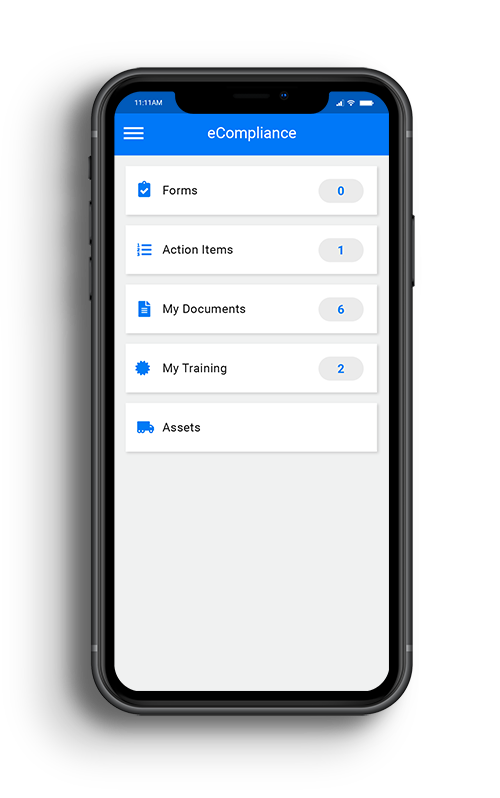
LAST UPDATED
November 19, 2021
WRITTEN BY
eC Author
If you’re like most health and safety professionals, you get up every morning determined to make a difference. You’re on a mission to create a better workplace and ensure your employees make it home safely at the end of each shift.
The journey to a safe practice work environment looks different across industries and organizations, but an increasing number of companies are adopting a Target Zero safety program as a key component of their corporate mission statement.
In this blog, we’re going to take a closer look at the Target Zero safety initiative as a concept and argue why it’s more effective as a mindset than a measurement.
The Target Zero Goal: What Is It?
To put it simply, the goal of a Target Zero initiative is to create an incident and injury free work environment. Arguably, all workplace safety training programs strive to achieve this in one way or another, but when Target Zero is taken too literally, it can become problematic.
3 Challenges with Target Zero
If the Target Zero safety program is enforced as a metric that your EHS team must achieve, you can run into the following issues which can be counterproductive to improving safety concerns at your company:
Creates a Culture of Fear – One of the most effective ways to improve safety is by building a positive safety culture, so the last thing you want to do is create a culture that breeds fear and makes your workforce uncomfortable. Target zero incidents can inadvertently send the message to employees that mistakes aren’t tolerated which isn’t good for morale or for continuous improvement.
Fuels Underreporting – Reaching a zero accidents or zero injuries target can be stressful. When too much pressure is put on employees to hit zero harm rates, underreporting of incidents and near misses tends to rise. Consequently, your employees may be painting a false picture of safety performance and workplace risk.
Promotes Complacency – Achieving target zero is totally attainable – until the next incident happens. No workplace can ever be truly risk free, and when a zero recordable workplace injury rate is achieved, employees can fall into the trap of resting on their laurels and can be less motivated to continuously improve processes and safety outcomes. Bottom line, this can be highly detrimental to employee engagement and employee involvement.
Moving Target Zero from a Metric to a Mindset
To continuously improve safety performance at your organization, it’s time to re-think your approach to Target Zero safety as part of your organization’s mission. It’s imperative we strive to make our workplaces safer and lower risk every day, but we need to be mindful of how we are positioning risk mitigation in our organizations.
To avoid the challenges mentioned above of approaching it as a metric, EHS professionals should think of Target Zero as a continuous process that needs the constant commitment and dedication of senior leadership and the workforce. Improvements to this approach and process can also be seen with the help of utilizing the latest technology.
Three Tips on How to Prevent & Reduce Workplace Injuries
Our latest whitepaper, Target Zero: Helping You Work Your Way to Zero Incidents. Zero Injuries. Zero Fatalities., discusses tips to help safety leaders effectively move towards proactive injury prevention and accident prevention.
Here’s your sneak peek:
1. Ensure Contractor Compliance and Implement Contractor Management Systems
Reducing workplace injuries and incidents starts with who you have on-site. Both internal and external contractors need to be fully accredited and compliant with all industry and regulatory requirements, to conduct their job tasks safely. In addition to competence and compliance, organizations must also effectively manage contractors once they’re on-site to gain insight into safety activities and performance.
2. Conduct Safety Audits, Assessments, and Observations
Regularly staying aware of risks and hazards which may be preset on-site can help you reach target zero. This involves conducting different types of audits such as hazard assessments, behavior-based safety observations, and job hazard analyses. Information gathered from these actions, can help provide opportunities for EHS professionals to identify possible risks and mitigate them quickly.
Learn more about how to conduct a job hazard analysis or how to identify workplace hazards.
3. Track Key Safety Metrics
Creating a safer work environment can also be accomplished with the help of effective leading and lagging indicators, as well as key safety metrics. With a concrete look into safety performance utilizing real-time data, safety leaders can identify gaps which may be present in a safety program. This can help pinpoint trends and patterns, helping leaders to make data-driven decisions to protect the workforce.
The above elements and more are discussed in our latest whitepaper, Target Zero: Helping You Work Your Way to Zero Incidents. Zero Injuries. Zero Fatalities., to help you learn more about how to prevent workplace injuries.
Fill out the form below or speak to one of our safety experts to find out how we can help your organization reach a Target Zero mindset.
Learn How You Can Get EcoOnline North America
Complete this form and one of our safety experts will be in touch.

